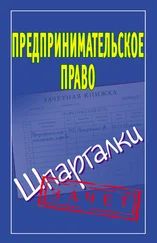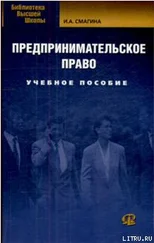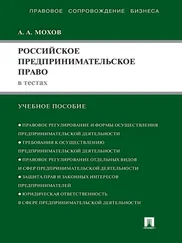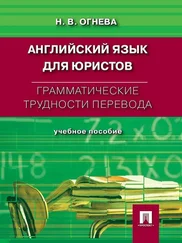The system of cumulative voting allows minority shareholders to multiply the number of their voting shares by the number of directors to be elected. All of these votes may be cast for one candidate or may be distributed among several candidates.
A proxy is the authority given to one shareholder to cast another shareholder's votes. Proxy solicitation is the process by which one shareholder asks another for his or her voting right. Proxy solicitation also refers to the document that is actually used to request the right to vote the other shareholders' votes. The minority shareholder's voting power increases as the number of proxies accumulate. Since majority shareholders, including management, can also solicit proxies, a struggle between the two groups, known as a proxy contest, often results.
A voting trust is an agreement among shareholders to transfer their voting rights to a trustee. A trustee is a person who is entrusted with the management and control of another's property or the rights associated with that property. The trustee votes those shares at the annual shareholders' meeting at the direction of the shareholders. Shareholders surrender only their voting rights. All other rights, including the right to receive profits, remain with them.
Sometimes, shareholders join together in a temporary arrangement (known as pooling agreement, shareholder agreement, voting agreement) agreeing to vote the same way on a particular issue. They differ from proxies and voting trusts because the shareholders retain control of their own votes. In this sense, pooling agreements are also the weakest voting arrangement because shareholders can change their votes at the last minute.
Shareholders can sue management to compel a change in direction or to force management to overturn a decision. The two types of suits available to shareholders are direct suits and derivative suits.
A direct suit is brought by shareholders who have been deprived of a right that belongs to them as shareholders to make up for any loss that they have suffered. These rights include the right to vote, the right to receive dividends, the right to transfer shares, the right to purchase newly issued stock, and the right to examine corporate books and records.
A derivative suit allows shareholders to sue corporate management on behalf of the corporation. Unlike a direct suit, a derivative suit is based on an injury to the corporation.
To bring a derivative suit, shareholders must exhaust all internal remedies. Before bringing suit, the shareholder must attempt to solve the problem by communicating with the board of directors and with other shareholders. In addition, in order to bring a derivative suit, a shareholder must own stock at the time of the injury and at the time of the suit. This is known as the rule of contemporary ownership.
The stock certificate is written evidence of ownership in shares in a corporation. A shareholder must have possession of the certificate and must sign and deliver it to the person to whom title is transferred (the transferee, who in turn becomes a shareholder of record) when selling or pledging shares. Loss of a certificate does not take away the owner's title to the shares of stock represented by the certificate. Shareholders' names and addresses are shown on the books of the corporation, and they receive dividends, notices of meetings, and any distribution of shareholder reports.
A shareholder's right by statute to inspect the records of the corporation is usually limited to inspections for proper purposes at an appropriate time and place.
Shareholders have the right to share in dividends after they have been declared by the board of directors. Once declared, a dividend becomes a debt of the corporation and enforceable by law, as is any other debt.
Unless the right is denied or limited by corporate charter or by state law, shareholders have the right to purchase a proportionate share of every new offering of stock by the corporation. This entitlement is known as the shareholder's preemptive right. This right prevents management from depriving shareholders of their proportionate control of a corporation simply by increasing the number of shares in the corporation.
Exercise 1. Comprehension questions:
1. How are the directors elected?
2. What are the requirements to meeting of the directors?
3. Explain the insider trading rule and the corporate rule.
4. Explain the theory of managerial control.
5. Explain the theory of corporate democracy.
6. How can the shareholders influence the elections of the board of directors?
7. Explain the term proxy solicitation.
8. What do shareholder's preemptive rights include?
Exercise 2. Find in the text English equivalents to the following:
Метод голосования акционеров путем сложения голосов по акциям; производный иск; продажа акций лицами и учреждениями, располагающими конфиденциальной информацией; преимущественное право покупки; доверенность; голос держателя акции, поданный по доверенности или через уполномоченного представителя; владелец именной акции, зарегистрированный в книгах компании; доверительный собственник; аккумуляция в одних руках акций различных лиц на началах доверительной собственности.
Exercise 3. Consult recommended dictionaries and give words or phrases to the following definitions:
Исполнительный орган общества; раскрытие информации; одобрение крупной сделки; ревизионная комиссия; аудитор общества; бухгалтерская и финансовая отчетность; совет директоров; общее собрание акционеров; информация об аффилированных лицах.
Exercise 4. Be ready to talk on one of the following topics:
1. Describe the functions of the board of directors and officers of the corporation with regard to the control of corporate affairs.
2. Distinguish between circumstances that call for the application of the business judgment rule and those that call for the fairness rule in the evaluation of management decisions.
3. Judge whether a corporate manager may or may not use inside information in a particular situation.
4. Determine the voting rights of shareholders regarding proxy solicitations, voting trusts, pooling agreements, and shareholder proposals.
5. Contrast shareholder direct suits with shareholder derivative suits and explain the prerequisites for each.
Exercise 5. Make up your own dialog on the case: In one case poor management by the president resulted in the steady decline of sales and profits in a once-profitable and distinguished company. There were seven outside board members on a board of sixteen, and although there was mounting evidence that the president was incapable of leading the enterprise, no action was initiated by the board members. Finally, after a succession of three loss years, a vice president of the principal lending bank, and not a director of the company, asked to meet with the board, and stated that unless a change was made, the bank loans would not be renewed. With this leverage from the bank, the outside directors made the decision to ask the president to resign.
Читать дальше
Конец ознакомительного отрывка
Купить книгу












